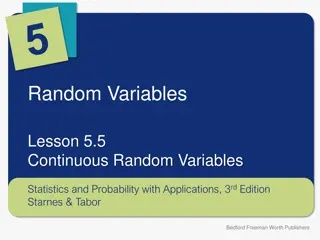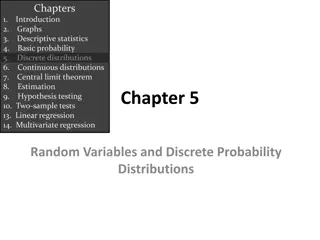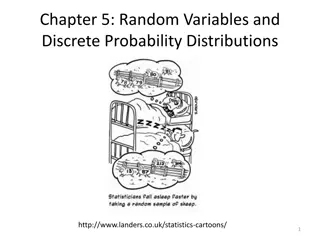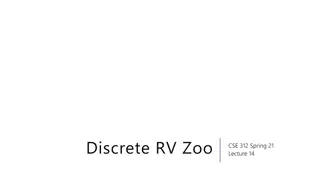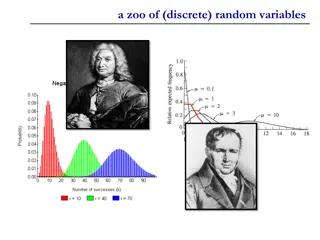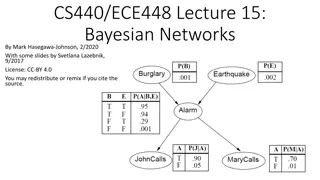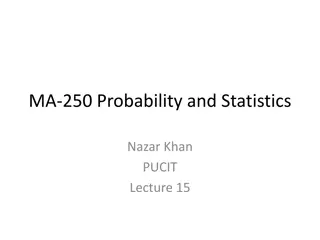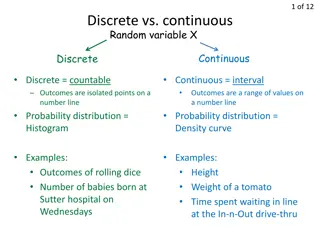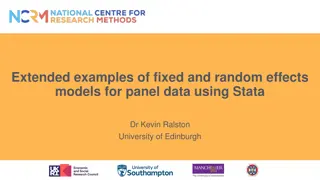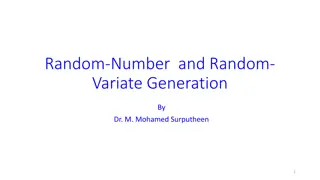
Understanding Random Variables in Probability and Statistics
Explore the concept of random variables in probability theory, distinguishing between discrete random variables with countable values and continuous random variables with infinite possibilities. See examples and definitions of both types to enhance your statistical understanding.
Download Presentation

Please find below an Image/Link to download the presentation.
The content on the website is provided AS IS for your information and personal use only. It may not be sold, licensed, or shared on other websites without obtaining consent from the author. If you encounter any issues during the download, it is possible that the publisher has removed the file from their server.
You are allowed to download the files provided on this website for personal or commercial use, subject to the condition that they are used lawfully. All files are the property of their respective owners.
The content on the website is provided AS IS for your information and personal use only. It may not be sold, licensed, or shared on other websites without obtaining consent from the author.
E N D
Presentation Transcript
APPLICATION OF RANDOM VARIABLES IN PROBABILITY AND STATISTICS, A RANDOM VARIABLE, RANDOM QUANTITY, ALEATORY VARIABLE, OR STOCHASTIC VARIABLE IS DESCRIBED INFORMALLY AS A VARIABLE WHOSE VALUES DEPEND ON OUTCOMES OF A RANDOM PHENOMENON.[1] THE FORMAL MATHEMATICAL TREATMENT OF RANDOM VARIABLES IS A TOPIC IN PROBABILITY THEORY. IN THAT CONTEXT, A RANDOM VARIABLE IS UNDERSTOOD AS A MEASURABLE FUNCTION DEFINED ON A PROBABILITY SPACE THAT MAPS FROM THE SAMPLE SPACE TO THE REAL NUMBERS
DISCRETE RANDOM VARIABLES A discrete random variable is one which may take on only a countable number of distinct values such as 0,1,2,3,4, .. Discrete random variables are usually (but not necessarily) counts. If a random variable can take only a finite number of distinct values, then it must be discrete. Examples of discrete random variables include the number of children in a family, the Friday night attendance at a cinema, the number of patients in a doctor s surgery, the number of defective light bulbs in a box of ten.
CONTINUOUS RANDOM VARIABLES Continuous random variable is one which takes an infinite number of possible values. Continuous random variables are usually measurements. Examples include height, weight, the amount of sugar in an orange, the time required to run a mile. Continuous random variable is not defined at specific values. Instead, it is defined over an interval of values, and is represented by the area under a curve (in advanced mathematics, this is known as an integral). The probability of observing any single value is equal to 0, since the number of values which may be assumed by the random variable is infinite.
NAME- DEEPAK KUMAR SINGH RGN. NO. -190301130002 Branch - B.TECH (ECE) BHUBANESWAR



